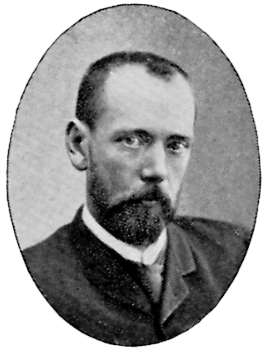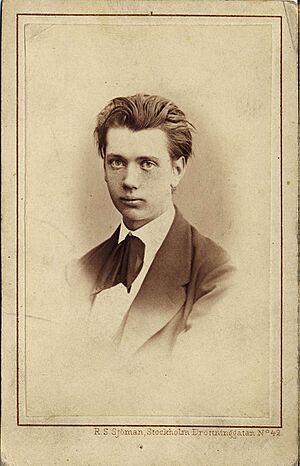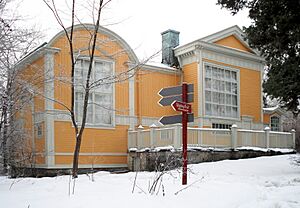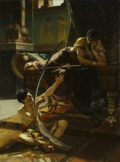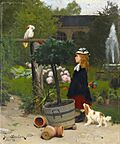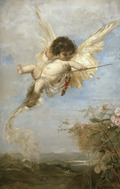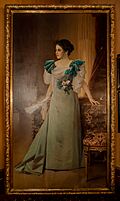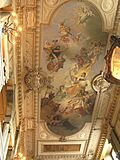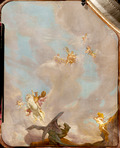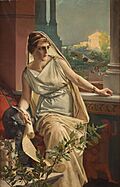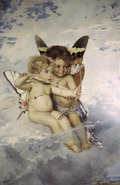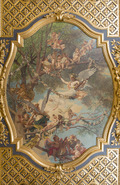Julius Kronberg facts for kids
Johan Julius Ferdinand Kronberg (born December 11, 1850 – died October 17, 1921) was a Swedish artist. He was known for his beautiful paintings and decorative designs.
Contents
Biography
Julius Kronberg was born in Karlskrona, Sweden, in 1850. He showed artistic talent from a young age.
Early Life and Studies
When he was just thirteen, Julius started studying art. He was accepted into the Royal Swedish Academy of Fine Arts. In 1870, he won a gold medal for his painting. It showed Gustav Vasa receiving a new Bible translation. This painting was even used on a postage stamp later!
He learned a lot from Johan Christoffer Boklund, a history painter. Boklund greatly influenced Kronberg's art style. In 1873, Kronberg received money to travel. This allowed him to visit cities like Copenhagen, Düsseldorf, and Paris.
After a short visit to Venice, he spent a lot of time in Munich. There, he became very interested in painting decorations. He also saw the art of Hans Makart, which he really liked. In 1876, his painting "Nymph and Faun" was praised by August Strindberg. Strindberg was a very famous writer. This led to Kronberg becoming a special member of the Royal Academy.
Artistic Journey
In 1877, Julius Kronberg moved to Rome. He started using lighter colors in his paintings. This was similar to the style of another artist named Giovanni Battista Tiepolo.
When he returned to Stockholm in 1889, he set up his own art studio. It was in Norra Djurgården. He focused on painting for buildings. His paintings often showed scenes from old myths or the Bible. He also painted scenes from plays by Shakespeare.
Some of his most famous works include three ceiling paintings. You can see them in the west staircase of Stockholm Palace. He also painted scenes from Jesus' life. These are in the dome of Adolf Fredrik Church. Another famous work is a painting of Eros (the god of love). It is above the stage at the Royal Dramatic Theatre.
In 1894, he traveled again to study art. He visited Würzburg, Madrid, and Venice. He especially looked at Tiepolo's ceiling paintings. The next year, he became a professor at the Royal Academy. But he resigned in 1898, which disappointed his students.
Later Years and Legacy
In 1885, Julius Kronberg did not agree with some artists. They were criticizing how art was taught at the Royal Academy. Because of this, his relationship with the Konstnärsförbundet (Artists' Association) became difficult. By 1900, their disagreements grew. He started to pull away from public life. He became more alone, and his paintings started to look similar. Later, he became interested in the study of religion. In his final years, he was sick with cancer.
Julius Kronberg passed away in Stockholm in 1921. He left his art studio to the Nordic Museum. A kind woman named Wilhelmina von Hallwyl paid to have it moved. The studio was rebuilt at Skansen. Skansen is an open-air museum and zoo. His studio was even used for the cover of ABBA's 1981 album, The Visitors!
You can see his paintings in several places. These include the Gothenburg Museum of Art, Skansen, and the Hallwyl Museum.
Selected Works
-
Karl XII (1893)
-
Stockholm Palace ceiling with symbolic figures: Religion, Peace, Science, Industry, and more.
-
Hypatia (1889)
-
Sappho (1913)
Images for kids


